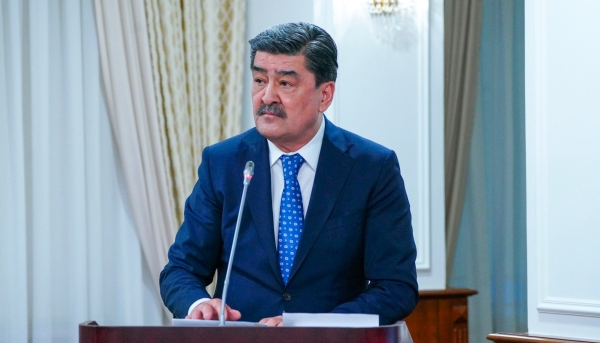Kazakhstan has expanded its specially protected natural areas (SPNA), with the total area now reaching 30.9mn hectares, a substantial increase from 869,000 hectares since the country gained independence. This growth is part of the nation’s efforts to preserve its biodiversity, particularly rare and endangered species of animals, through the creation of new protected zones and the expansion of existing ones.

At a recent government meeting, Yerlan Nyssanbayev, the Minister of Ecology and Natural Resources, provided an update on the ongoing efforts to conserve Kazakhstan’s wildlife. He noted that the country currently has 227 species of rare and endangered animals, including 131 vertebrates and 96 invertebrates. These efforts are guided by international standards, with updates to the species list being based on criteria from the International Union for Conservation of Nature (IUCN). Nyssanbayev reported that proposals have been made to remove 21 invertebrate species from the list, while six invertebrates and five vertebrates will be added.
A key measure in conserving rare species has been the establishment of SPNA, which Nyssanbayev described as the most effective approach to animal preservation. In particular, Kazakhstan has made significant strides in protecting endangered species such as the snow leopard, the Houbara bustard, and the Turan tiger.
The snow leopard population, for example, has more than doubled since the 1990s, thanks to extensive monitoring and protection efforts. Approximately 70% of their habitat is now within protected areas, and the use of satellite collars and camera traps has been instrumental in gathering data to refine conservation strategies. Currently, the snow leopard population stands at about 180 individuals, and further improvements in the SPNA network are planned based on ongoing research.
In addition to the snow leopard, efforts have been made to restore the population of the Houbara bustard, a bird species crucial to the country’s biodiversity. The Houbara Bustard Reproduction Center, built in collaboration with the United Arab Emirates, has successfully raised and released over 73,000 Houbara bustards into the wild between 2009 and 2024.
Another notable conservation project is the restoration of the Turan tiger, a species that has been absent from Kazakhstan for more than 70 years. In line with the program, the Ile-Balkhash state nature reserve was created, and efforts to reintroduce the tigers have been underway. Two tigers from the Netherlands were brought to the reserve in 2023 for enclosure breeding, and more are expected to be brought from Russia by 2025.

Nysanbayev also highlighted the success of the kulan population restoration program, which began in 1956 with the relocation of 14 individuals from Turkmenistan. The population of these wild asses now stands at 4,493 individuals. Similarly, work on reintroducing Przewalski’s horses, which had disappeared from the wild by the late 1960s, is progressing with the arrival of the first 7 horses in June 2024. A total of 40 horses are expected to be introduced by 2029.
The saiga population in Kazakhstan has also seen remarkable growth, from just 21,000 individuals in 2003 to approximately 2.8mn today. This success has led the IUCN to upgrade the saiga’s status from “Critically Endangered” to “Near Threatened” on its Red List.
In a broader effort to ensure the long-term sustainability of wildlife in Kazakhstan, the Ministry of Ecology is also advancing digital tools such as the “Tabigat.gov.kz” interactive map, which tracks the habitats and migration of wild animals. Plans are underway to expand the map to include more data on national parks, recreational areas, and water bodies.
Furthermore, the Ministry has launched a bill in collaboration with the Majilis (the lower house of Kazakhstan’s parliament) to boost game breeding, a practice that has proven effective in other countries at replenishing wildlife populations. In countries like New Zealand and Namibia, game breeding has helped restore species and maintain ecological balance.
Despite these positive developments, there are still challenges. Nysanbayev noted that specialized wildlife protection organizations have not yet been established in nine regions of Kazakhstan, and 14.8mn hectares of protected land remain unprotected. The Minister called for more collaboration between the Ministry of Ecology, local authorities, and scientific institutions to address these gaps.
One area requiring urgent attention is the saker falcon, which has seen its population decline in recent decades. To address this, the Ministry has developed scientific programs to study the current population and assess the effectiveness of reintroducing the species into the wild. A proposed Reproduction Center for the saker falcon is also in development in collaboration with international partners.




